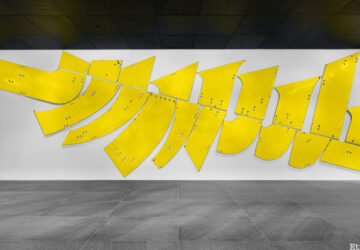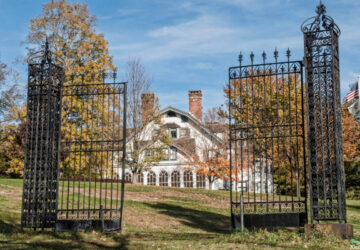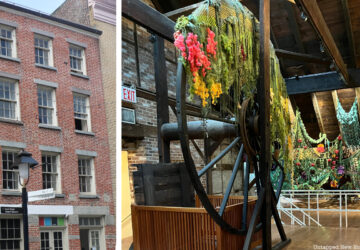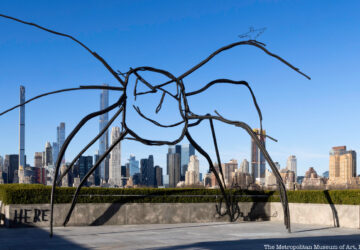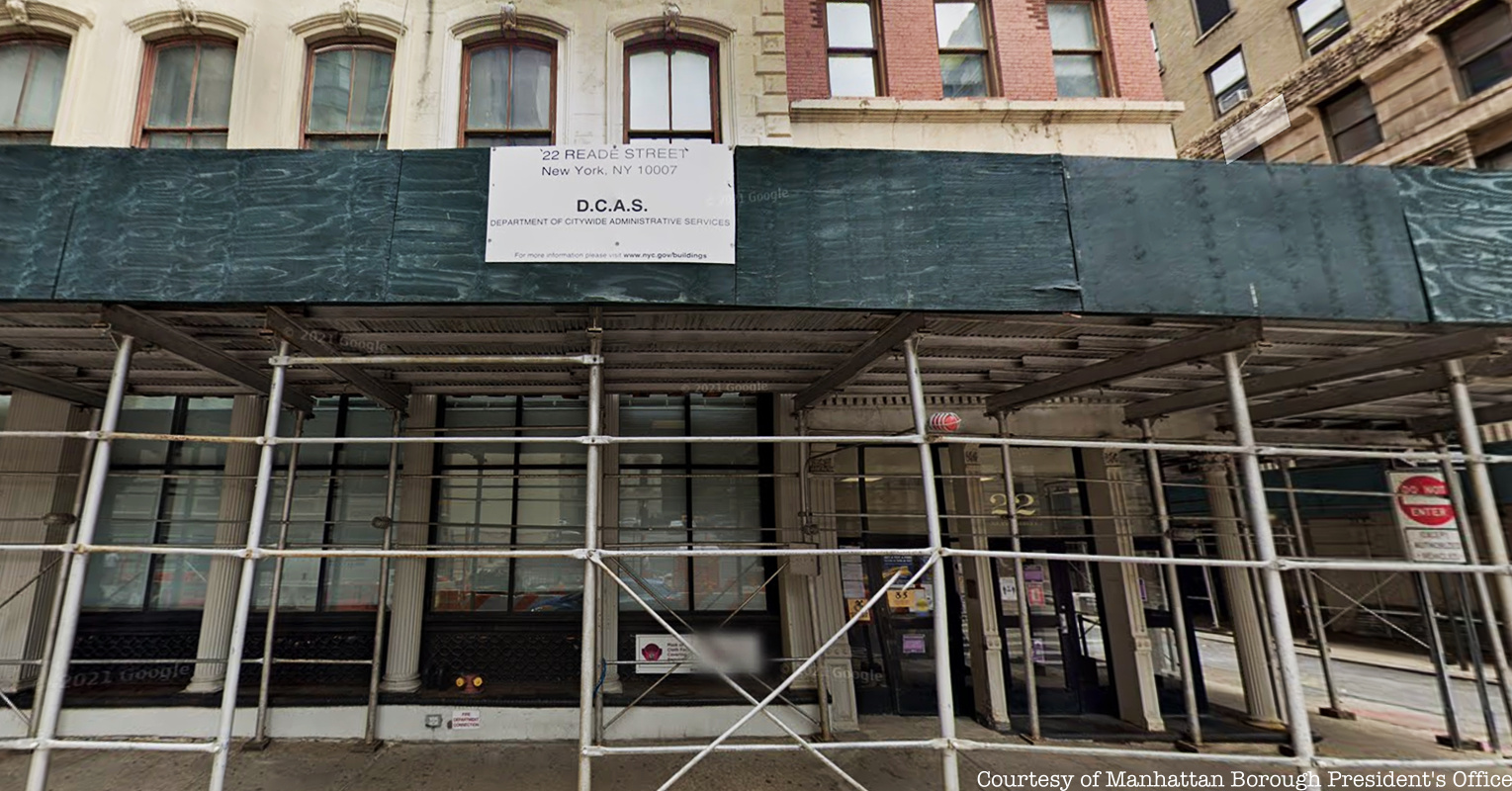Scaffolding, or sidewalk sheds, have become part of New York City’s personality. These structures are an essential tool that gives workers a stable platform to work on while keeping pedestrians safe from debris during construction. However, while they serve an important purpose while in use, their pervasiveness and tendency to linger – sometimes for over a decade – have made sidewalk sheds a nuisance. To call attention to this problem, Manhattan Borough President Mark Levine’s office “honored” the city’s oldest sheds for “reaching preposterous ages” with cleverly named Shedies Awards!
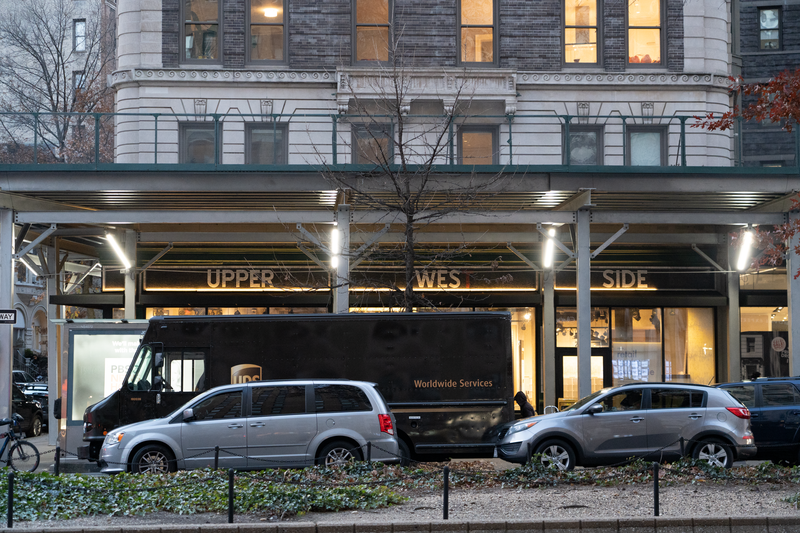
There are more than 9,000 sheds all around our city, hindering the beautiful appearance of the city’s architecture. According to the webpage for Levine’s “Shed the Shed” initiative, more than 230 scaffoldings across the city have been up for over five years. On average, a sidewalk shed stays up for 498 days. The Shedies Awards note the top eight oldest sidewalk sheds in Manhattan – the borough with the most sidewalk sheds – calling attention to negligence and lack of maintenance at the buildings they are attached to.
“The idea of scaffolding is that it would be temporary,” Levine says, “You put it up because there’s a safety issue. You fix the façade, and you take it down.” But when a sidewalk shed has been up for more than ten years, “Obviously, something is failing…That’s what led me to dive into this,” says Levine.
Scaffolding that wraps around the medical examiner’s office in Kips Bay, wins (or loses) first place as the oldest on the Shedies Awards list. It was built in 2009, fourteen years ago. Its award certificate notes that this shed “was raised just in time to see Obama’s inauguration.” The building, 520 First Avenue, is owned by the NYC Office of the Chief Medical Examiner. The reason for the wrap-around shed is unknown. There were no active permits for the building between 2016 and 2021 while the scaffolding remained up.
“Turns out that some of the worst offenders are publically owned buildings,” Levine told Untapped New York founder Michelle Young in an interview for a forthcoming episode of The Untapped New York Podcast, “It’s not a good thing that the city itself is not setting a good example for privately owned buildings.”‘
The presence of sidewalk sheds can hinder local businesses by causing decreased foot traffic and lack of visibility. There are also public safety concerns when scaffolding creates dark corridors and obstructed pathways. Tenants in buildings covered by scaffolding can lose their views or sunlight. Scaffolding is also just an eyesore. “They’re a sign of dysfunction in the city that just doesn’t have its act together…If it’s up for ten years the impact is real on the city,” Levine warns.
Many of the sidewalk sheds in New York City are erected by order of Local Law 11, or The Façade Inspection & Safety Program (FISP). This piece of legislation was enacted in 1998 after a Barnard student Grace Gold was tragically killed by falling debris from a building façade in 1979. The law stipulates that all New York City buildings over six stories must be examined by a DOB-qualified professional every five years. “It’s the right goal, we have to keep pedestrians safe, but what’s happened in the 45 years since is an example of a good idea run amok. It’s time to update the whole regime around managing these structures for the benefit of public space in the city,” Levine declares.
There are many reasons why a sidewalk shed may be left up for an extended period. This can be due to a lack of financial resources to complete building repairs, permitting complications, inspection delays, or even red tape from landmarking. Tied second on the Shedies Awards list is a residential building on 116 East 17th Street and the former PS64 building at 605 East 9th Street in the East Village. Their sidewalk sheds have been dubbed as behaving like “A Rebellious Teen” and celebrating its “Bar Mitzvah” as this year marks the sheds’ 13th year.
As landmarks, these two buildings face unique challenges. In general, older buildings tend to require more maintenance and those projects can be more complicated and more expensive than modern buildings. Landmark designation adds an extra level of approvals for construction and there are restrictions on what materials can be used, adding months or even years to projects and therefore extending the stay of the sidewalk shed.
façade repairs can cost millions of dollars, no matter how old a building is. Oftentimes, it’s much cheaper to install a sidewalk shed than make the needed repairs. This workaround is used intentionally by negligent landlords looking to save money and take a shortcut, which Levine says “is unacceptable.” Building owners who just don’t have the cash, but do want to make repairs, are also forced into simply keeping up the sidewalk sheds. Another cause for delay may be neighbor disputes. While these structures stand erect for months, no work is being done due to conflict between property owners.
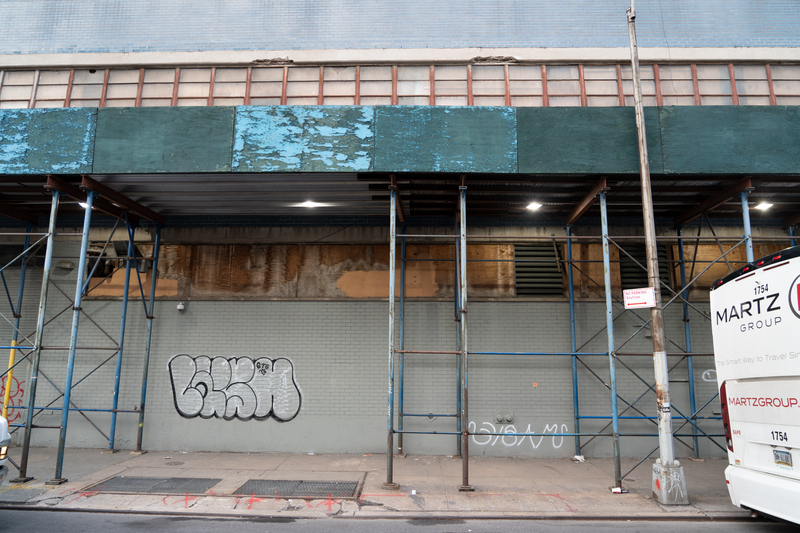
Since there are many reasons why a sidewalk shed may overstay its welcome, there need to be various solutions. Mark Levine’s “Shed the Shed” initiative is a five-strategy approach to taking down delinquent sheds. In the first strategy, Levine argues that helping building owners with finances will help speed up construction work, thus getting rid of scaffolding faster. He proposes an accelerator program that will provide tips on decision-making in construction, financing, and engineering to building owners. Another helpful tool, Levine argues, would be zero or low-interest loans for work to get buildings in compliance with Local Law 11.
In the cases of property owner and permit disputes, Levine’s office aims to push mediation onto both parties and “expedite façade permitting processes at Landmark Preservation Commission by expanding the staff available and dedicating a unit specifically to Local Law 11 compliance.” The third strategy is to hold building owners accountable for façade work with a dedicated task force. This means increasing fines and civil penalties to encourage order and maintenance.
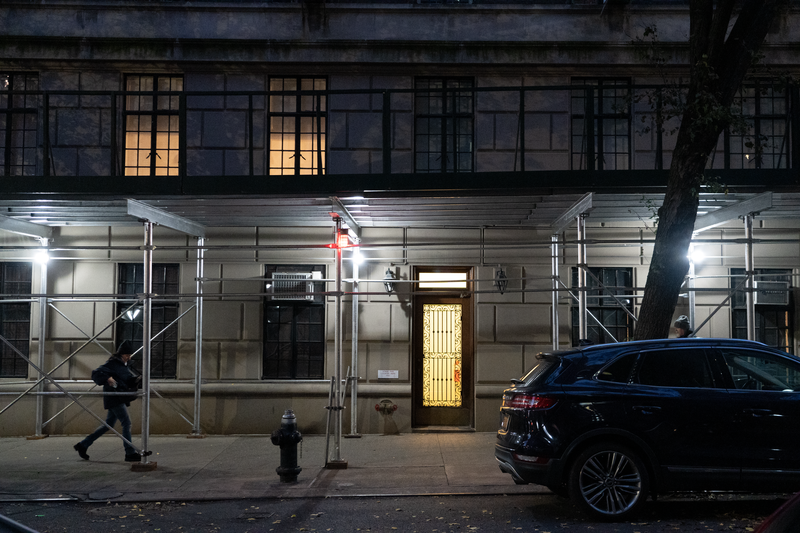
Levine also proposes updating Local Law 11 to allow the usage of more innovative technology, such as drones, for better and easier inspection. By keeping these buildings and their tenants in check, the removal of scaffolding will be quicker. In the meantime, strategy number four also suggests reforming scaffolding design standards to allow for more convenient and customized designs to accommodate each building and the needs of local communities.
The final approach suggests extending Local Law 11 by two years. Buildings are required to be inspected every 5 years, but Levine suggests altering the inspection cycle to encourage extensive work to be completely done. This includes buildings made with lower-risk materials.
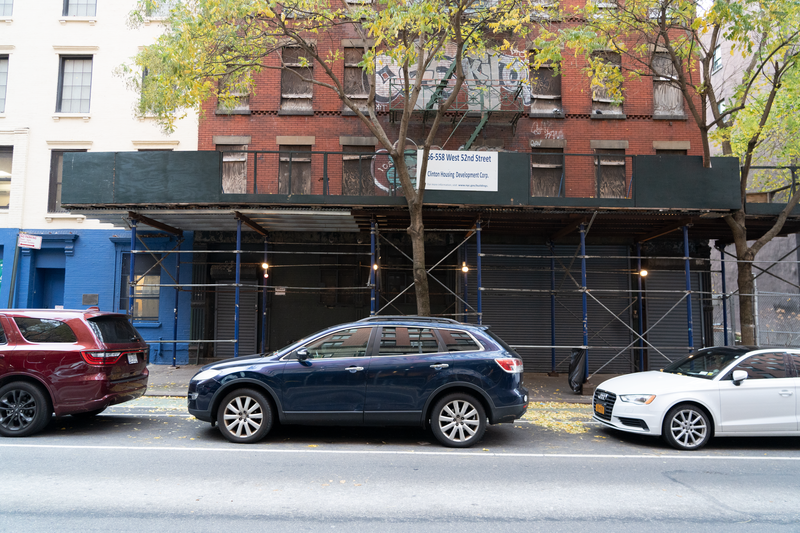
Rounding out the Shedies list are 443 West 40th Street, a Hunter College-owned building in Hell’s Kitchen with a shed that is “officially older than Snapchat” at 12 years old, a residential apartment at 571 West Avenue with a 10-year-old sidewalk shed that is now “older than the Second Avenue subway,” an Upper West Side condo building at 2139 Broadway with 9-year-old scaffolding that is “older than the Freedom Tower,” a former school building at 556 West 52nd Street with 7-year-old scaffolding that is “older than Pokemon Go,” and finally, a construction site at the City Planning Building at 22 Reade Street with scaffolding that is 6 years of age, “just became a kindergarten graduate.”
Stay tuned for more from Mark Levine on an upcoming episode of The Untapped New York Podcast where he talks more about how to eradicate scaffolding!
